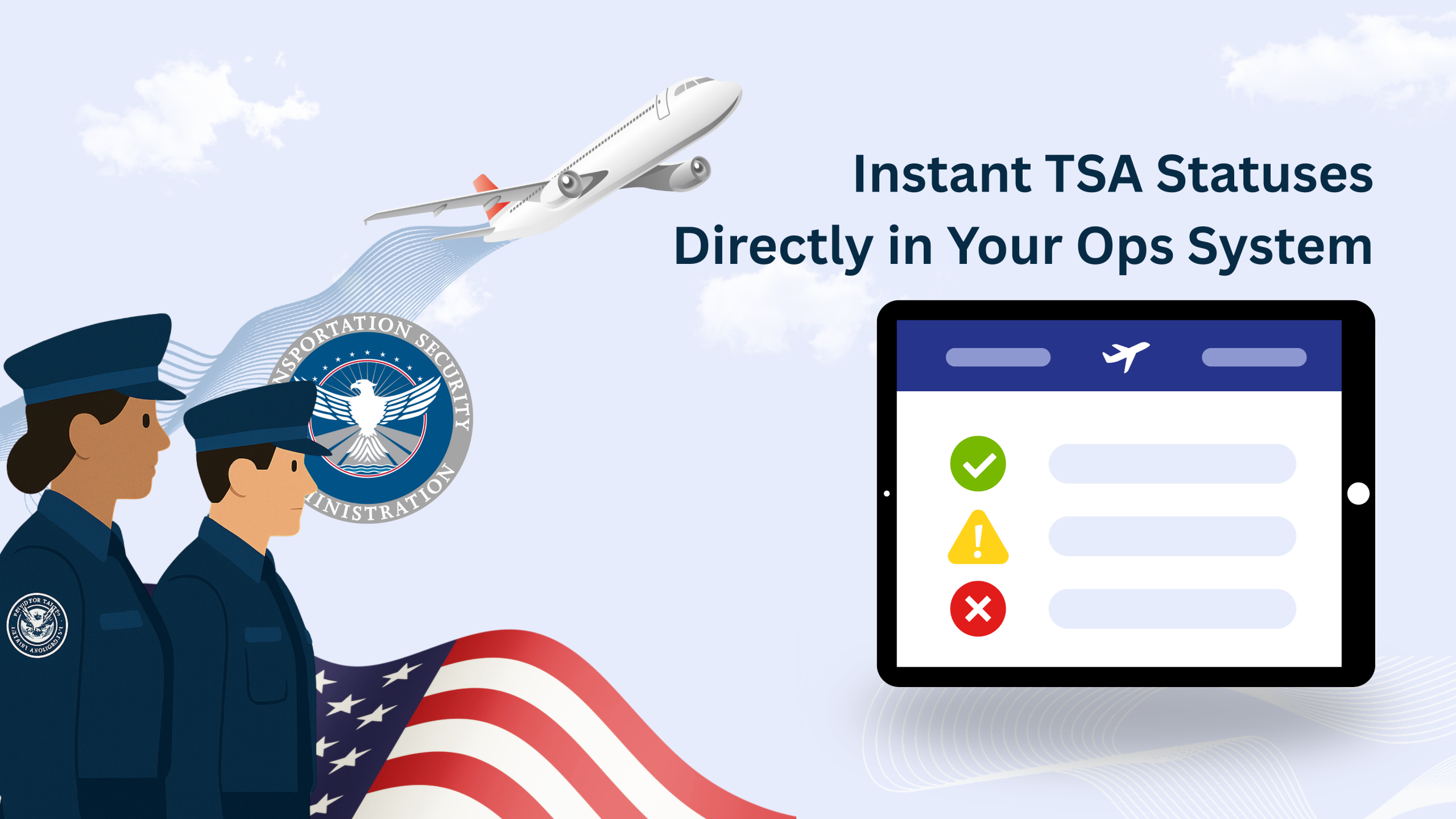Flying to, from, or over the United States involves more than just eAPIS submissions. Operators may also comply with the Transportation Security Administration’s Secure Flight program, which ensures, among other things, that every passenger and crew member is checked against U.S. government watchlists before boarding.
Streamlane automates these TSA Secure Flight checks, giving operators complete visibility into passenger statuses directly within their ops systems. In this blog, we break down the TSA Secure Flight regulation and show how Streamlane simplifies compliance through automated checks.
What Is the TSA Secure Flight Program?
Secure Flight is a TSA program established under 49 CFR Part 1560. Its purpose is to enhance aviation security notably by vetting all passengers and crew against federal watchlists — including the No Fly List, identifying individuals prohibited from boarding, and the Selectee List, designating those who require additional screening.
What Does This Mean for Operators?
For operators, Secure Flight compliance means collecting, managing, and transmitting passenger data in line with TSA requirements.
The required information — known as Secure Flight Passenger Data (SFPD) — includes:
- Full name (exactly as shown on the travel document)
- Date of birth
- Gender
- Redress Number or Known Traveler Number (if applicable)
Once submitted, TSA returns a status for each passenger or crew member, which determines boarding procedures:
- Cleared – Passenger or crew member may proceed without issue.
- Selectee – The individual must undergo enhanced screening prior to boarding.
- Inhibited / Not Cleared – Boarding is strictly prohibited.
- Error – Usually caused by typos or formatting mistakes in the submitted data.
Operators must act on these statuses before departure; individuals with an Inhibited or Not Cleared status cannot board under any circumstance.
Passenger data (SFPD) must be transmitted as soon as a reservation is made, or at the latest 72 hours before scheduled departure. Any later changes — such as passenger substitutions, flight rescheduling, or last-minute bookings — must be sent immediately to maintain compliance.
How Secure Flight Data Is Submitted
There are two main ways operators submit passenger data to U.S. authorities: automated transmission through a system-to-system connection using the DHS Router, typically used by regular airlines, and manual submission through the eSecureFlight (eSF) web portal, commonly used by smaller charter and private operators that are not equipped to establish a direct system connection.
Streamlane is a TSA-certified Secure Flight data provider with direct connection to TSA, enabling any carrier to easily automate data transmission and eliminate the need for manual submission through the eSF portal.
Automated TSA Checks with Streamlane
With Streamlane, operators can automate TSA checks either alongside eAPIS submissions or as a standalone process. Passenger and crew data are securely vetted with TSA, and results appear in real time directly in the operator’s scheduling platform and via the Streamlane web portal.
Notifications clearly indicate each status and guide the carrier’s next actions, ensuring full transparency and control at every step.
Automation saves operators over 30 minutes per flight, eliminates the risk of manual data-entry errors, and prevents costly non-compliance issues. Streamlane allows operators to focus fully on their mission — confident that every passenger has been vetted and cleared according to U.S. law.
When combined with Streamlane’s automated eAPIS service, operators benefit from a truly seamless workflow — maximizing operational efficiency and ensuring full compliance with both TSA and CBP requirements.
Contact Us
Ready to simplify your TSA Secure Flight compliance?
Get in touch with Streamlane for a demo and discover how automation can save time, ensure accuracy, and keep every flight fully compliant.
